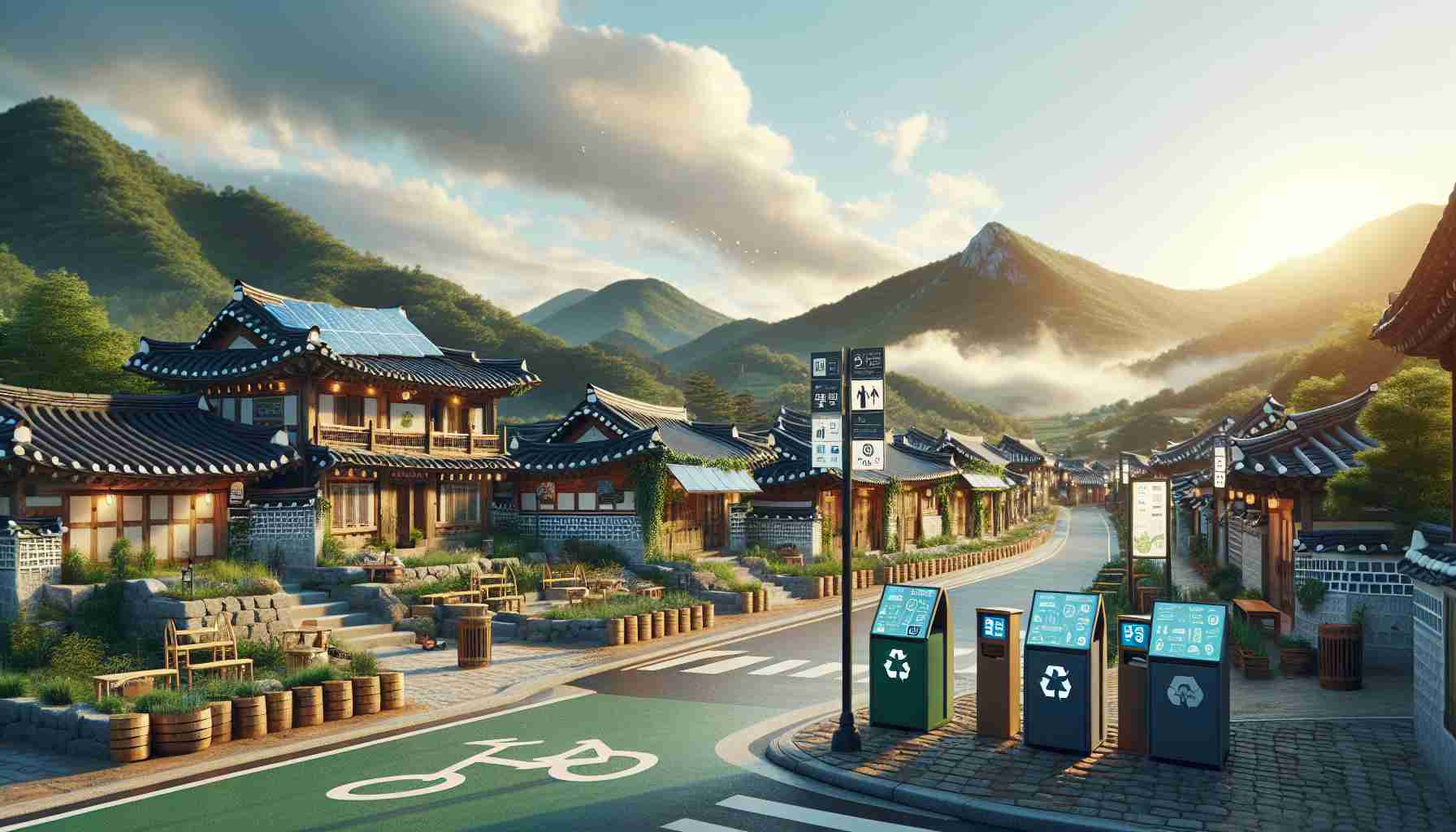A Glimpse into History and Modernity
Seoul’s Bukchon Hanok Village blends a modern skyline with a rich historical past, showcasing traditional hanok houses dating back to the 14th century. The village is nestled close to iconic landmarks like Jongmyo Shrine and the grand palaces of Gyeongbokgung and Changdeokgung, offering visitors a glimpse into Seoul’s essence.
A Popular and Vibrant Destination
Bukchon Hanok Village’s charm attracts millions of tourists annually, with visitor numbers peaking at 6.6 million in 2023. Despite the bustling tourist activity, the village remains a residential area for approximately 6,000 locals. However, coexistence between residents and visitors has faced challenges, leading to complaints about noise, cleanliness, and parking issues.
Promoting Sustainable Tourism
To address these concerns, Seoul’s local government has designated Bukchon Hanok Village as a “special management zone,” implementing strategies to regulate visitor flow. Measures include restricting certain bus routes, dividing the area into color-coded zones for effective management, and imposing fines for non-compliance with regulations.
A Strategic Approach
The district office has marked specific areas within Bukchon Hanok Village for enhanced monitoring, with plans to introduce a trial period for the new regulations starting in October. Stricter enforcement, such as a nightly curfew from 5 pm to 10 am in the busiest “red zone,” aims to alleviate pressure on the area and enhance the visitor experience.
Embracing Sustainable Growth
While the concept of a curfew for tourists has sparked interest and skepticism, Seoul’s proactive steps underline the city’s commitment to preserving its cultural heritage and fostering sustainable tourism practices. By balancing preservation efforts with visitor management, Bukchon Hanok Village sets a precedent for responsible tourism development in urban settings.
Enhancing Sustainability Through Innovative Initiatives
As Bukchon Hanok Village continues its journey towards revitalization for sustainable tourism, there are additional layers to this multifaceted process that deserve attention. One critical question arises: How can technology be leveraged to enhance the visitor experience while minimizing disruptions to the local community?
Integrating Technology for Improved Visitor Management
Innovative solutions, such as the implementation of smart sensors and real-time data analytics, offer a glimpse into the future of sustainable tourism in Bukchon Hanok Village. By monitoring tourist footfall, traffic patterns, and noise levels, authorities can make informed decisions to optimize visitor flows and mitigate potential disturbances to residents.
Challenges and Controversies on the Horizon
Despite the laudable efforts to promote sustainable tourism, challenges loom on the horizon. One key challenge is striking a delicate balance between preserving the traditional charm of Bukchon Hanok Village and accommodating the evolving needs of a modern tourism landscape. How can the village retain its authenticity while adapting to changing visitor expectations?
Advantages and Disadvantages of Sustainable Tourism Measures
The emphasis on sustainable tourism in Bukchon Hanok Village offers numerous advantages, including the preservation of cultural heritage, reduced environmental impact, and enhanced community engagement. However, challenges such as balancing commercial interests with conservation efforts, ensuring equitable benefits for local residents, and managing the delicate interplay between tradition and innovation remain at the forefront.
Exploring the Intersection of Tradition and Innovation
The exploration of new technologies and management strategies in Bukchon Hanok Village symbolizes a step towards harmonizing tradition with innovation. By embracing digital tools for visitor management, the village showcases a commitment to preserving its historical roots while embracing the opportunities presented by modern advancements.
Continued Dialogue for Sustainable Progress
As Bukchon Hanok Village navigates the complexities of sustainable tourism, ongoing dialogue between stakeholders, residents, policymakers, and visitors is essential. By fostering a culture of collaboration and transparency, sustainable progress can be achieved while honoring the heritage and legacy of this unique cultural enclave.
For further insights on sustainable tourism practices and innovative urban conservation strategies, visit UNESCO’s official website.
—
The information provided strives to deepen the understanding of the challenges and opportunities surrounding the revitalization of Bukchon Hanok Village for sustainable tourism, emphasizing the importance of a holistic and forward-thinking approach in preserving cultural heritage and fostering responsible tourism practices.

















